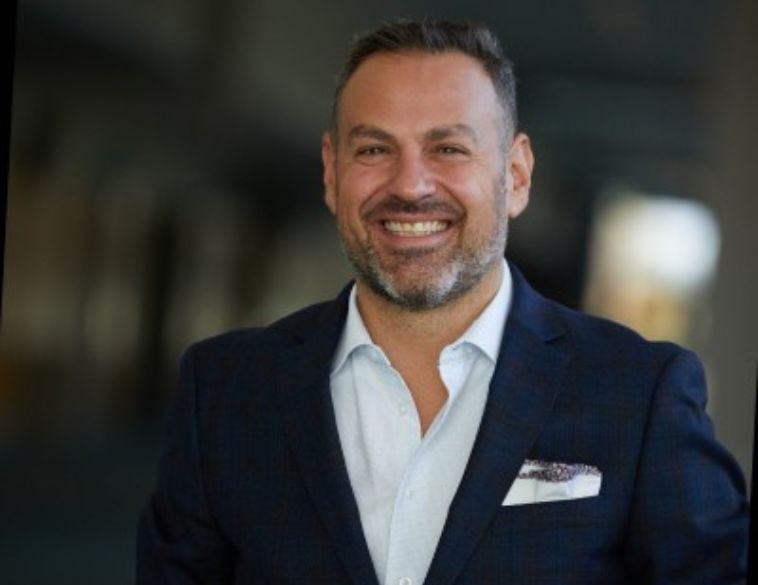CSN’s Chief Executive Officer, Ryan Bruno, shares his thoughts on the current and potential future of the collision repair industry, as well as a game-changing merger.
Ryan Bruno joined CSN Collision Centres a little over two years ago as Chief Financial Officer.
He has an extensive background in financial and strategic planning, including mergers and acquisitions as well as economic analysis with a variety of organizations (including the Bank of Canada, TD Securities, and Economical insurance).
Bruno’s skill set and experience placed him in an ideal position to take on the role of President & Chief Executive Officer at CSN, which he assumed in May 2020.
Since then CSN has continued to focus on its long-term objectives, one of which has been the just-announced merger of CSN with 1Collision Network in the U.S. Not only does this provide a platform for CSN Collision Centres to enter the U.S. market, but also leverages the expertise of two successful, like-minded networks that will allow this new entity to prosper well into the future.
In an exclusive interview with Autosphere.ca, Ryan shares some of his background experiences, his thoughts on the merger and also how the collision industry can adapt and continue to prosper in the wake of one of the most disruptive periods in history.
Autosphere: Can you tell us a little bit about your background in terms of education and work experience?
Ryan Bruno: From an education standpoint, I took an undergraduate degree in economics from Brock University and later, enrolled in the MBA program at the Rotman School of Management, University of Toronto. I’m also a CFA Charter Holder and chartered investment manager.
In terms of work experience, I started my career with the Bank of Canada, working in a macroeconomic analysis role. I later moved to the Investment Banking Group at TD Securities where we focused on mergers and acquisitions. From there, I spent some time with the Bank of Canada and at Economical Insurance working with their in-house M&A teams.
Perhaps more importantly, I grew up in the collision repair industry and I think that has played a key role in my success later in life.
What do you feel has been useful from your previous experiences when it comes to your current role at CSN?
I think I’ve been fortunate in that everything I’ve done leading up to joining CSN Collision Centres has put me in a position to have a positive impact.
I have spent most of my career helping businesses grow through mergers with other companies and a key component of this work was building a financial analysis and strategic plans and then making sure we had everything in place to execute on those plans.
Growing up in the collision repair industry has also been very helpful because the importance of collaboration and loyalty in this industry isn’t always obvious to an outsider.
Finally, having worked for a large insurance company has also been a great experience in that I feel it has helped me gain a good understanding of the context in which these businesses operate.
Do you feel there are any particular nuances that define the modern collision sector?
When it comes to nuances, every business and every industry is unique. Although I wouldn’t say ours is the only unique industry out there, I would say there are certain components that are unique, and these are aspects that can take some time to learn.
For example, in the collision repair sector, you are selling your product to one person—the vehicle owner—but that product is actually paid for by another person—the insurer—so inherently there is a little bit of conflict there.
The OEMs and the vendors are also very important parts of the industry as well—so taking all these pieces and bringing them together in a way that keeps everybody happy requires a bit of a delicate balance.
The big news right now is the merger between CSN and 1Collision Network in the U.S. Can you tell us why it’s happening now and why CSN decided to team up with 1Collision?
When I joined CSN a little over two years ago, one of the first things we did was undertake a strategic review of the business. Part of that was discussions with licensees, staff, industry partners, and so on.
As part of this process, we identified the fact that CSN needed to expand its scope to include the U.S. market. This was something we announced to our licensees at our conference last fall and around the same time, we were introduced to Jim Keller at 1Collision Network by Dave Luehr of Elite Body Shop Solutions.
This led us to decide between entering the U.S. market organically or through a merger. The more we learned about and got to know Jim and his team, the more obvious it became that the best solution was a merger because both CSN and 1Collision had a common approach to the collision repair business and it was a great strategic fit.
There are a lot of similarities between both organizations—particularly in how we recruit facilities to join the network. We are both focused on attracting market leaders and helping them be successful as well as enabling them to really support their insurance partners and our insurance partners as well.
How does the merger position CSN in comparison to other banners that have both a Canadian and U.S. presence in the collision sector?
The type of stores we attract I think has been a key differentiator. From the very beginning, CSN has always been focused on attracting the strongest operators and collision centres in Canada.
Now, we are taking that approach to the U.S. and working with 1Collision on that is really an extension of something we already do.
Now the idea of attracting market leaders is a very important point to understand. When a store joins CSN, they are not starting from zero. We take the best stores and we make them better.
By doing that we are able to be more focused and efficient on our operations which allows us to then pass more value back to our licensees.
Most importantly, when market leaders are looking to decide which banner to join they tend to look at who is already there. So, you could say that our best recruitment tool, are the stores we already have.
How do you think this merger will impact both Canadian and U.S. consumers?
From a consumer standpoint, with vehicles becoming more and more complex it is also increasingly challenging for consumers to identify which facilities are properly equipped to repair their vehicles.
As recognized market leaders, our licensees have invested in the training and tools to safely repair the vehicle in a cost-effective and timely manner.
We also have a collaborative approach in dealing with insurers and OEMs which makes the overall experience for consumers much better. That part continues to grow throughout Canada and the U.S., providing more consumers with a repair option they can trust.
With this merger do you see CSN expanding into the U.S. market or is 1Collision entering the Canadian market?
The way we are going to be organized is that we are going to have field teams in each country. Jim Keller, the President of 1Collision Network will continue to manage daily operations in the U.S., and Flavio Battilana who is our COO at CSN will continue to manage day-to-day operations in Canada.
Precisely for that reason, we want to have the appropriate level of focus in local market conditions. However, both teams will have a cross-border mandate, so we can stay at the forefront of best practices and continue to deliver value. Therefore, teams like marketing, programs and services, finance, and so on, will have a cross-border mandate.
What do you feel are some of the critical things businesses need to evaluate right now in the collision repair sector?
Without belabouring a topic that is top of mind for everyone, COVID-19 has created a great deal of uncertainty and I think every business has to be evaluating long term sustainability right now. I think that is the number one issue and a part of that is evaluating a range of outcomes over the next 18 months.
The market could recover and if it does recover, we need to be able to support our insurance partners and vehicle owners that need to have their vehicles repaired but at the same time, there could be a second wave of the virus, resulting in more decreases in repair volumes.
If that does happen, we need to be able to make sure we are healthy enough to survive—even without government programs—because it is unclear how long those programs will last.
At the same time, we need to make sure we are creating a physical environment that keeps everybody safe including insurers that are visiting our facilities, as well as vendors, staff, and customers.
For that reason, CSN is right now working with licensees to implement photo estimating, vehicle delivery programs, vehicle sanitization and we are working on other solutions that we would like to bring forward in the coming months.
What do you see as some of the biggest challenges (and also opportunities) ahead for the collision industry?
I think overall, the industry will continue to see a need to invest in tools and training, certification, and autonomous vehicle technology. At the same time, there are headwinds in the industry that are unlikely to improve. We need to think about attracting and retaining technicians, operating costs, material costs—all of that is going to be a challenge.
At the same time, insurers will need to continue controlling the severity and that is why the CSN platform is really designed to provide our locations with value and support in a manner that ensures their success.
Is there anything else you’d like to mention?
We are really excited about bringing the 1Collision team into the CSN family. Both businesses complement each other really well and we are looking forward to taking some the things they do better than us and being able to support our stores with that and our insurance partners.
At the same time, we have certain tools that we have built up with CSN over the years that we think will be beneficial as well. It is an exciting time here at CSN.


